Quick read: The Ituri crisis in brief
- More than 360 people killed, 300,000 displaced since June
- Bleak conditions await those forced into camps by the violence
- The Ituri conflict is overshadowed by Congo’s Ebola crisis
- Grievances from past conflicts have never been fully addressed
- Military operations have scattered the group responsible for the violence
- After nearly two years, the attackers’ motives remain hard to discern
The general hospital in Tchomia is not designed for medical emergencies. The shabby, single-storey clinic in the Democratic Republic of Congo’s northeastern Ituri province has no X-ray machine, no defibrillator, and barely enough doctors and nurses to get through the day.
But there is an emergency unfolding here, inside overcrowded wards where the smell of antiseptic fills the air. On one bed, a soldier lies with gunshot wounds to his left knee and right thigh. Blood is escaping through his bandages.
On the next bed, a 35-year-old woman lies sedated, falling in and out of consciousness. The same bullet that took a chunk out of her left arm also hit her two-year-old son in the head. He is lying dead in a nearby morgue.
Across the courtyard, a woman and her eight-year-old son are sharing a metal gurney. The boy has been hit with a bullet to his foot; the mother an arrow to her face. Both stare vacantly across the room.
The patients all come from the same village: Fitchama. It’s only five kilometres from the hospital in Tchomia, but it might as well be in some far-off province. Cars can’t travel down the slush of mud that passes for a road. Even walking is a challenge.
Its remoteness made it the perfect place for the militia group that locals around here refer to simply as les assaillants – the attackers – to mount the latest in a series of macabre attacks that are pulling this region apart.
This time round, seven people were killed in under an hour: three of them children from the same family, all of them by machetes. Save for a few cattle herders wandering through the long grass, Fitchama –like many villages in this part of Ituri – now lies empty.
“Even if there is peace, I have lost my hope,” said Josephine Bawaghere, the mother of the murdered children, who sat nursing her own injuries in Tchomia hospital.
So have many others.
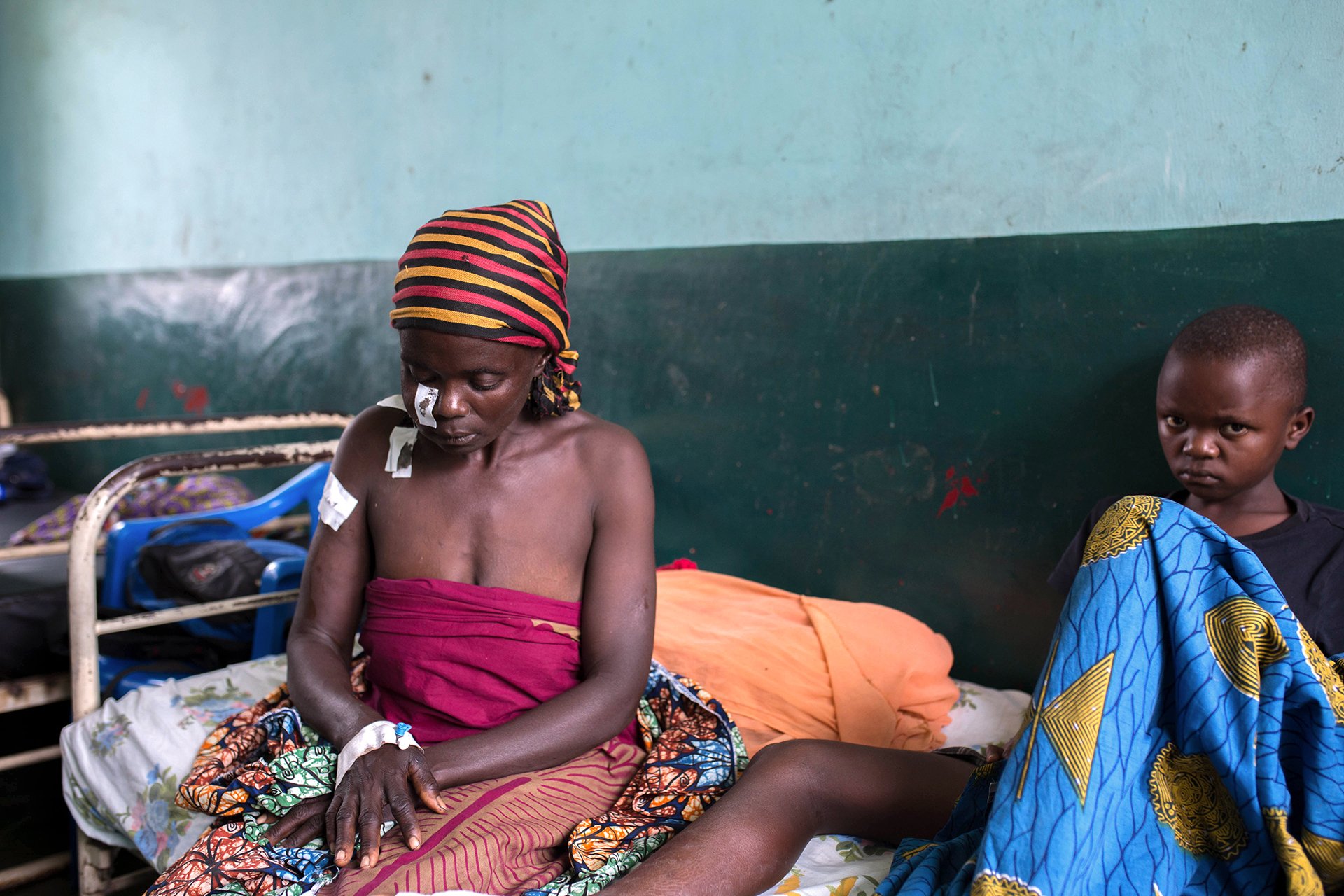
Since June, at least 360 people have been killed and more than 300,000 uprooted, as a mysterious militia group thought to be drawn from the region’s marginalised Lendu community spreads across the region, attacking mainly ethnic Hema villages like Fitchama.
With the world’s eyes on eastern Congo’s Ebola outbreak – the second deadliest on record – the killings here have attracted little attention, leaving displaced people in under-resourced, overflowing camps and victims stuck in poorly equipped hospitals like Tchomia. Aside from major towns, aid agencies say they are struggling to access the displaced.
Some fear the spread of Ebola – which has already killed 179 people in Ituri and almost 1,900 overall – among displaced people, though for now measles, cholera, malaria, and diarrhoea are striking down many more. Medical charity Médecins Sans Frontières has described the suffering as “unprecedented”.
Last month the Congolese army said it had “totally neutralised” the armed group it believes is behind the violence: CODECO – a decades-old Lendu religious and agricultural organisation that allegedly re-emerged in late 2017 as a violent militia.
But locals say the group remains active and that military operations have simply scattered its fighters, who continue to attack far-flung villages like Fitchama. Others believe the group has moved its base deeper into Ituri’s Wagu forest, where dense canopy provides cover from prying helicopters.
Despite attempts to unmask the militia, UN officials and aid workers say the violence is poorly understood and doubt CODECO – at least in its traditional guise – is really pulling the strings. Many point the finger at meddling outsiders.
“We cannot say for sure what is behind this violence,” said Claudine Chassigneux, the UN’s acting head of office in Bunia, the provincial capital.



Mass killings
Ituri, a region fabled for its gold mines and timber supplies, is no stranger to war. From 1999 to 2003 it was the theatre of some of Congo’s bloodiest fighting, as a power struggle between rebel groups devolved into ethnic violence –much of it between the Hema and Lendu.
After a decade of relative peace, conflict returned in late 2017 and early 2018 when more than 260 people – mostly Hema – were killed and 200,000 driven from their homes in waves of brutal attacks that came seemingly out of nowhere.
Troughs in violence allowed some people to return home in late 2018 but earlier this year the militia began a series of new attacks – this time against the Congolese army. By June, it had acquired a cache of heavy weapons alongside its usual stock of arrows, spears, and machetes.
The massacres that followed hit many people from many villages, but the worst was saved for Tche – a farming area in Ituri’s Djugu territory where 161 people are thought to have been killed in the worst single atrocity since the conflict restarted.
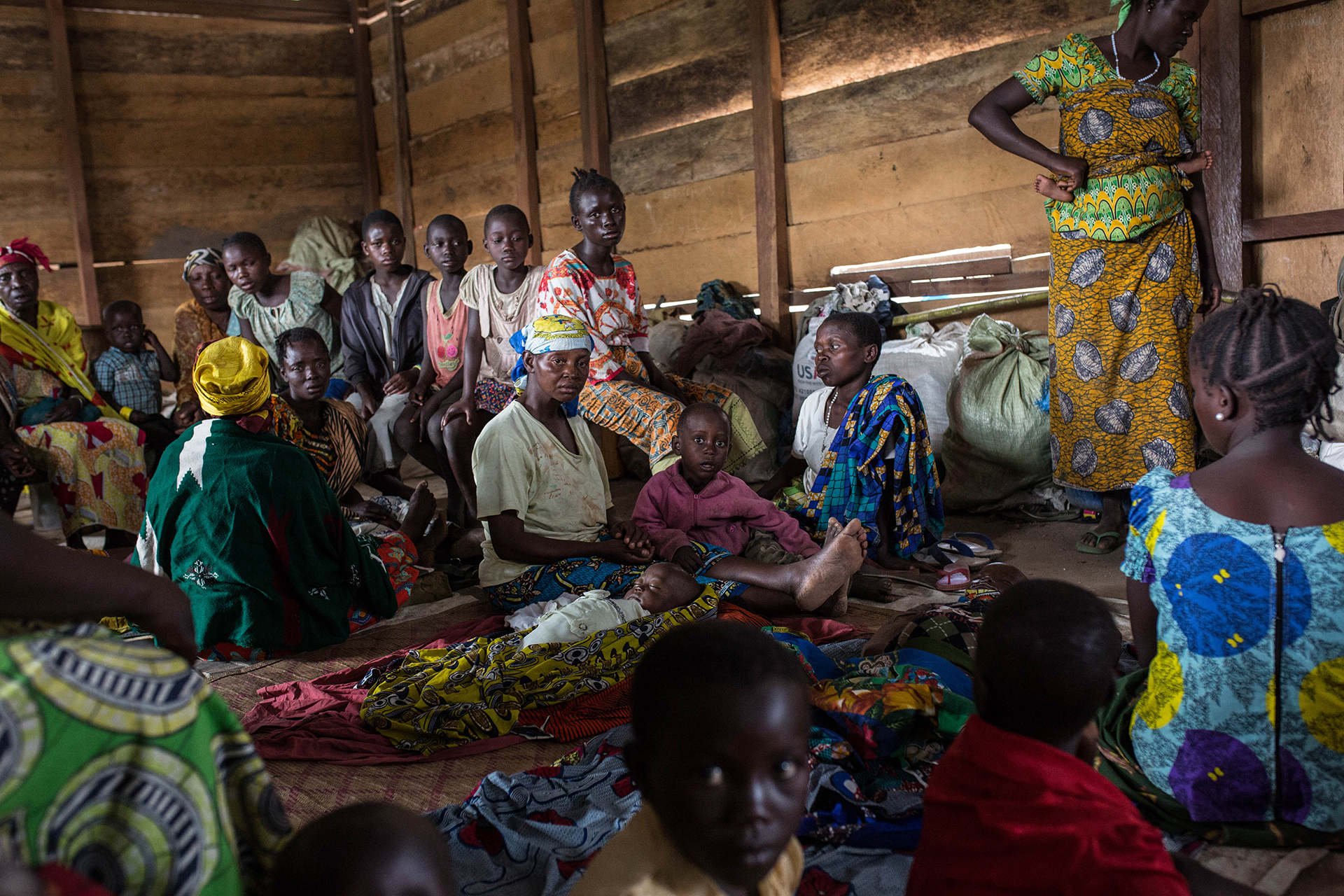
Before the attack, Tche was considered a relative safe haven. Thanks to the presence of a military barracks, displaced people from across the region had gathered in the area – a collection of small hamlets around a large, fertile grazing site known as a pâturage collectif.
But late last year the military withdrew, giving the militia a free run on the area. Witnesses describe waves of well-coordinated attacks involving scores of men equipped with heavy weapons, machetes, and gallons of fuel.
Attempts by the Congolese army to retake the area were repeatedly repelled. For days the militia occupied the centre of Tche – pillaging what they wanted and burning what they didn’t, while the dead lay unburied.
The lucky ones survived through a mixture of gile and sheer luck. Eliye Dedo, 45, found a beige Red Cross gilet and passed himself off as a doctor. Shantale Lotsove, a heavily disabled woman, hid in nearby mountains drinking rainwater rung out of her skirt, and eating leaves and raw cassava pulled out of the ground.
“Until now I don’t understand how I survived,” she said.
Overflowing camps
The brutality of attacks on villages like Tche and Fitchama has left people dotted across dozens of displacement sites in Ituri. Churches, schools, and other public places have flung open their doors, while many others are still hiding in the bush.
“There are so many needs,” said Moise Ubimo Upoki, a government official helping to look after displaced people.
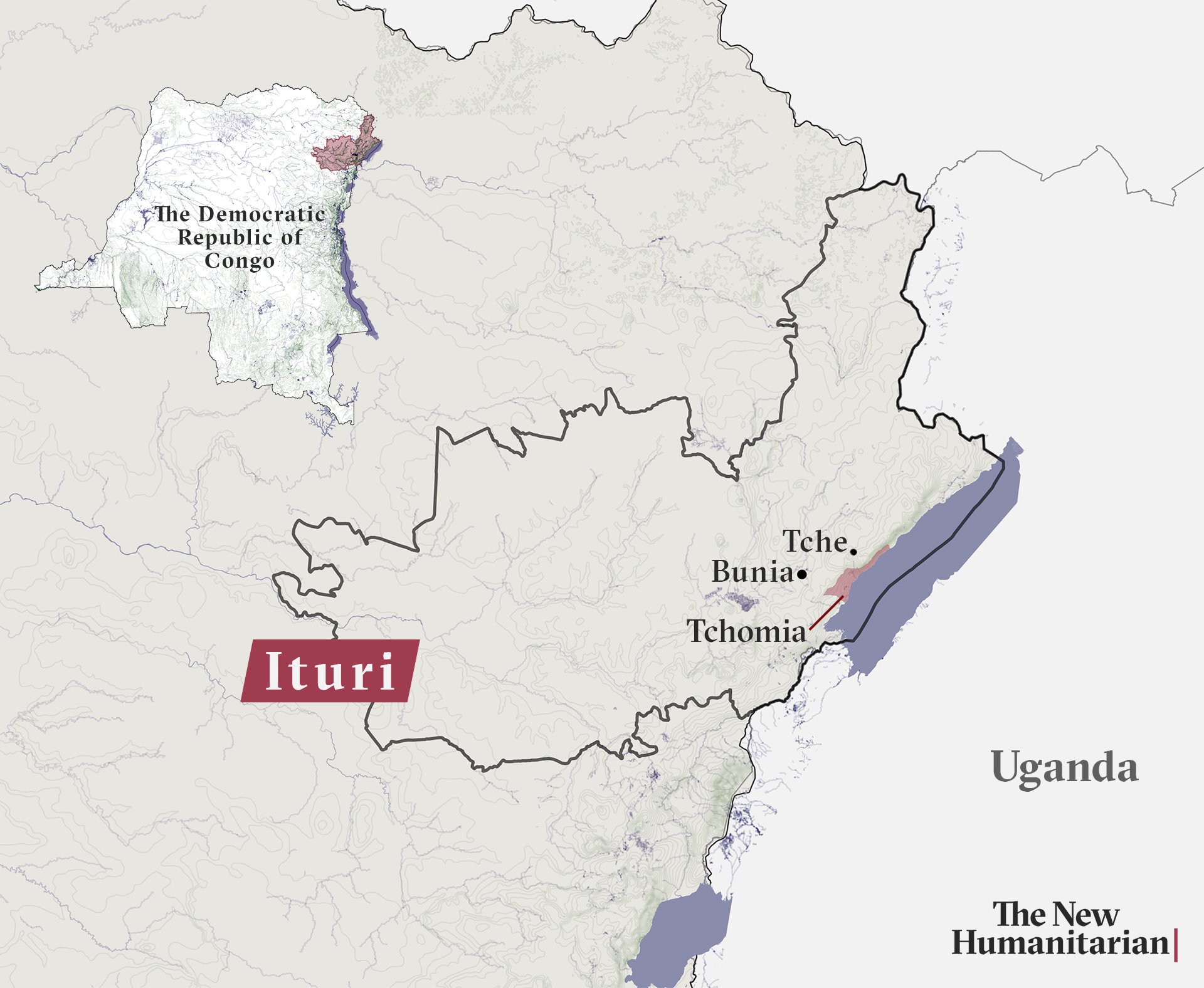
The largest displacement camp – a bleak image of neglect in Bunia – rubs shoulders with an Ebola treatment centre and a national virus laboratory that camp officials fear is coughing out contaminants onto the residents. The facility has almost tripled in size since June – 12,000 people are now sharing 32 latrines.
Too few tents mean new arrivals are being forced into communal hangars, where cramped conditions are allowing measles to spread. Seventy have died in two months, including three newborns on the morning of The New Humanitarian’s visit late last month – their tiny bodies wrapped in colourful shrouds and laid out in front of their grieving mothers.
“Give us the strength to understand this…” the mothers sung in Swahili.
A new camp in Bunia is currently being built to cope with the extra numbers, but Upoki said support remains inadequate. During last year’s violence he said the camp was packed with television crews from around the world. Attention has since moved on to Ebola.
“Ebola is a priority, but it is also a distraction,” he said. “People here, they are forgotten.”
Mystery killers
Many theories have been offered as to who is behind the violence – government officials hoping to stall last year’s long-delayed presidential elections, local business elites, foreign-backed armed groups – but now “there is only one response”, said Justin Kisembo, president of a Hema youth association: “The people of CODECO”.
Founded in 1978 to support Lendu agriculture, CODECO is suspected of producing the “magical” – often alcoholic – substances that helped some militias kill so wantonly during previous conflicts in Ituri. But UN officials say questions still hang over CODECO’s involvement and how a religious-agricultural movement could amass a weapons cache and acquire the skills needed to mount attacks on such a scale.
“Ituri’s problems are being transmitted from generation to generation.”
What is clear is that Ituri remains haunted by an unresolved past. Under Belgian rule, the Hema here were viewed as a superior race and helped into positions of privilege in education, administration, and business. The Lendu languished.
Land laws introduced by Mobutu Sese Seko – Congo’s kleptocratic former leader – entrenched Hema power over land, while foreign interventions by neighbouring states brought proxy conflicts that turned Ituri into Congo’s bloodiest corner.
Though many fighters dropped their weapons after a 2003 French-led peacekeeping force helped staunch the violence, trauma and resentment between communities was never truly exorcised and a pool of ex-rebels struggled to readjust to civilian life.
“Ituri’s problems are being transmitted from generation to generation,” said Bienvenu Ukec of Justice Plus, a local human rights organisation.
After demobilising from the Front for National Integration (FNI) – an old Lendu militia – in 2005, David Djubo* went on to study political science at a local university in Bunia. He hoped to advance Lendu interests through a career in politics. Instead, he spent the next 15 years ironing shirts for a living.
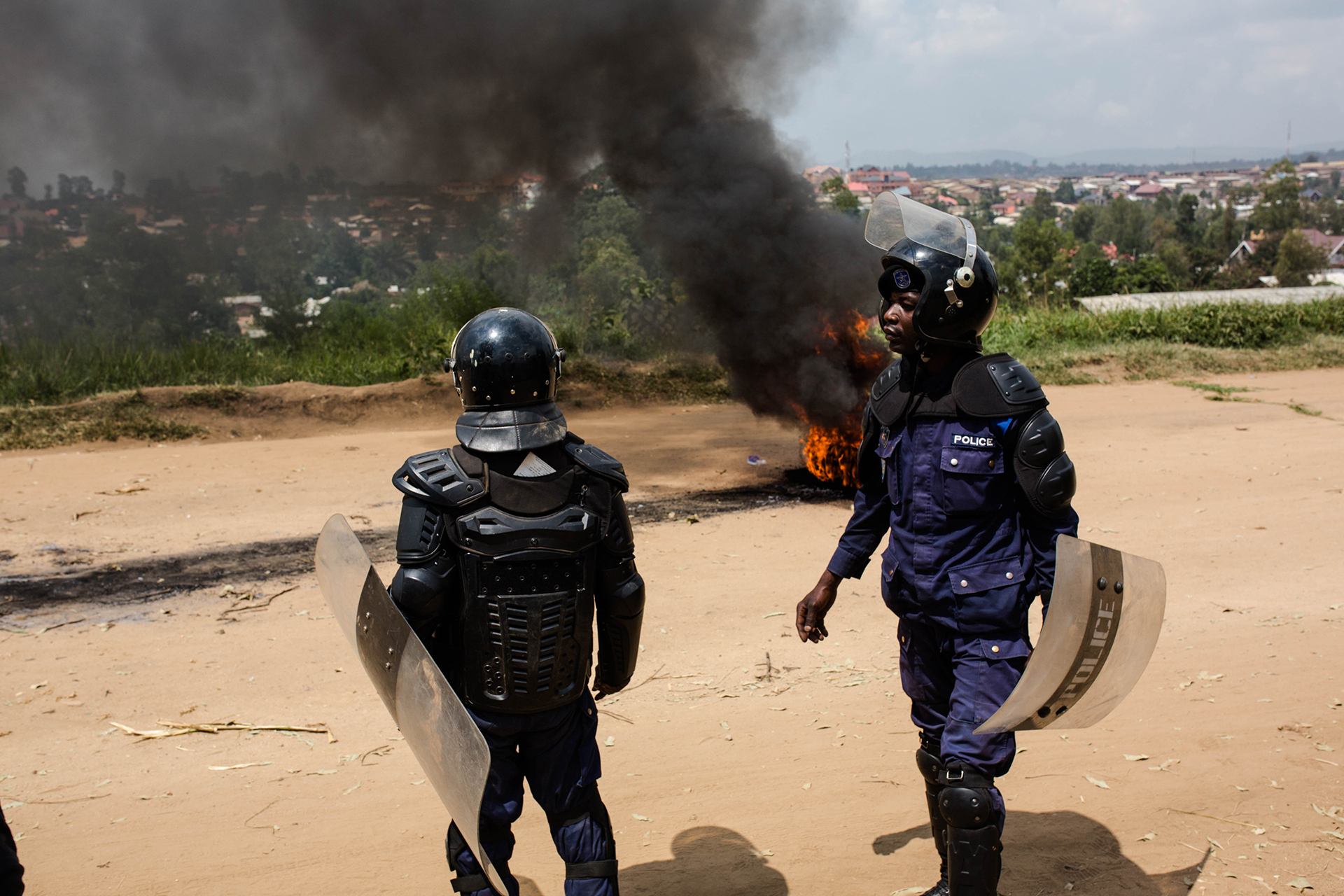
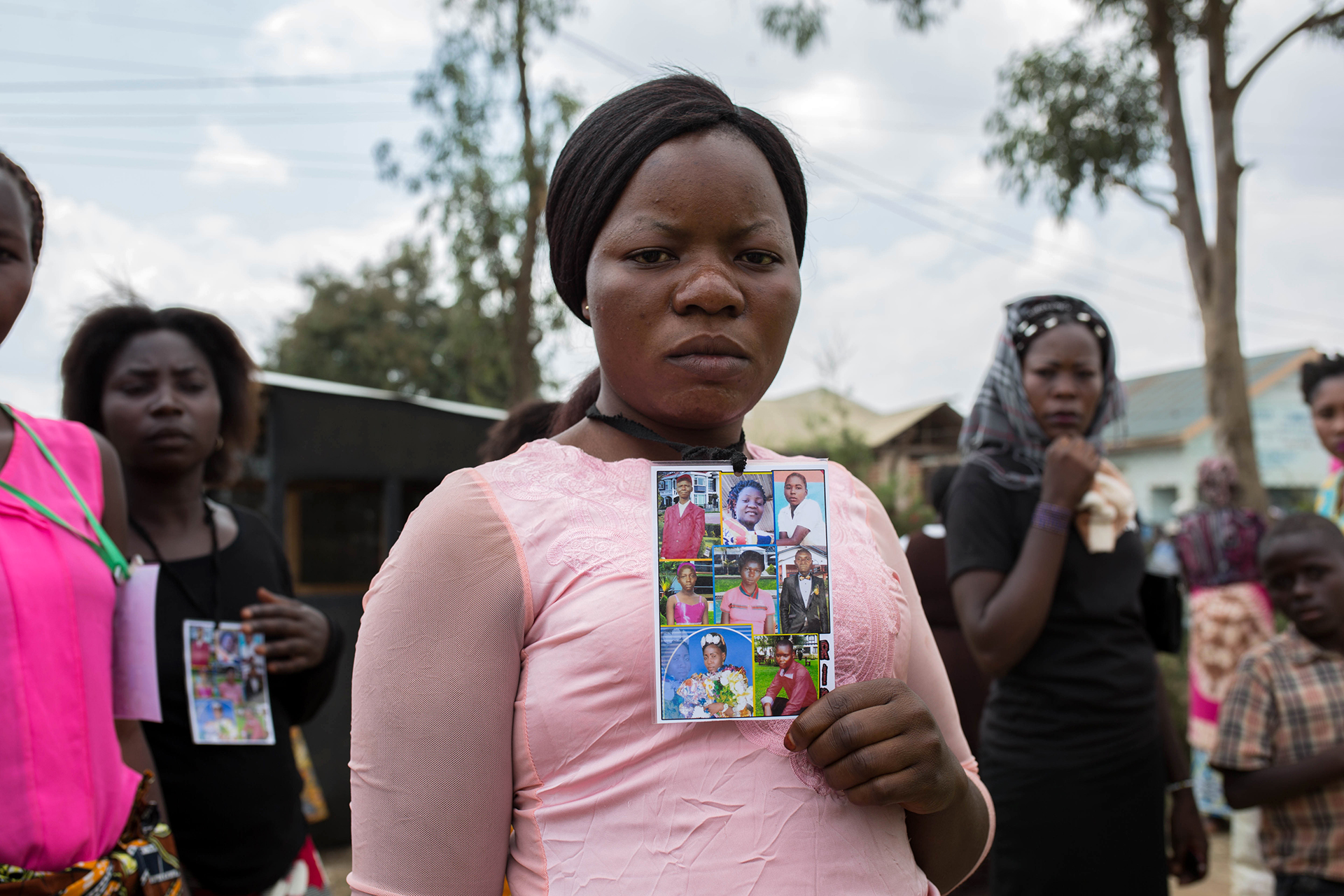
When the new militia – which Djubo did not name – started organising, he and his former comrades were some of the first to join. Research by Pax, an NGO involved in peacebuilding, supports TNH’s finding that ex-FNI rebels are involved in the current violence.
Their motives, according to Djubo, include a mixture of short-term revenge for army extortion and attacks by Hema youth, and a long-term strategy to control the land and riches of Ituri by forcing other communities out.
“To kill is not enough,” Djubo said from a shabby suburb of Bunia. “We need to terrify people.”
‘Back to ground zero’
As needs rise, aid groups say insecurity is hampering their ability to access displaced populations. Many are relying on armed escorts that are undermining their neutrality and slowing down operations.
Previous relief efforts geared towards rebuilding homes and encouraging displaced people to return to their villages are now “back to ground zero”, said Lena Becker, a reporting officer for the UN’s refugee agency, UNHCR, in Bunia.
“To kill is not enough. We need to terrify people.”
Efforts to get Hema and Lendu community leaders talking have also amounted to little, with Hema leaders suspicious of dialogue while their villages continue to be attacked. Many fear Hema youth will soon mobilise into militias, if community leaders cannot restrain them.
While the army insists it has regained control in some areas, the scope of attacks seems to be expanding and other ethnic communities like the Alur say they are also now being targeted.
Last month, seven members of the same family – all Alur – were decapitated while harvesting beans in their fields near Bunia, an attack that sent shockwaves through the city of roughly one million people. As with most killings here, the attackers’ motives remain hard to fathom weeks later: some suspect a family dispute, others les assaillants.
In a conflict with few certainties, at least one thing is clear, said Amani Bienfait, a relative attending a funeral where a single mass grave laid three generations of his family to rest. “Their lives were wasted.”
(*Name changed to protect identity for source’s security.)
(TOP PHOTO: Victims of a massacre in the outskirts of Ituri’s capital, Bunia, are laid to rest in a single mass grave.)
pk/ag





